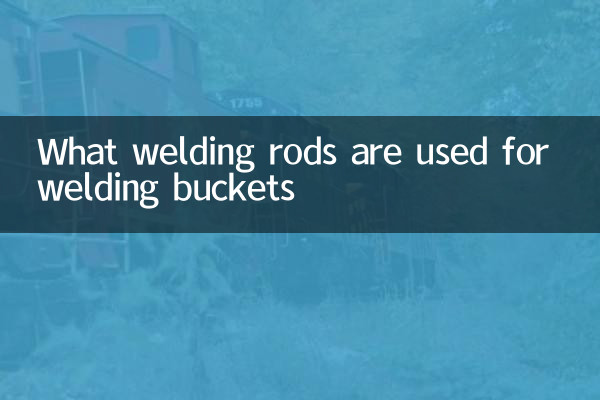What welding rods are used for welding buckets
In the field of construction machinery maintenance and manufacturing, welding buckets are a common but highly technically demanding job. Choosing the right welding rod not only affects the welding quality, but also directly affects the service life and safety of the bucket. This article will combine popular topics and hot contents on the entire network for the past 10 days to analyze in detail how to choose welding rods when welding and digging buckets, and provide structured data references.
1. Common materials and welding difficulties in welding buckets

The bucket is usually made of high-strength wear-resistant steel (such as NM360, NM400) or ordinary structural steel (such as Q345). The following difficulties should be paid attention to when welding:
1. The material has high hardness and is prone to cracks
2. The working environment is harsh and needs to withstand impact and wear
3. Most of the welding parts are special-shaped structures, and the operating space is limited.
2. Key factors in welding rod selection
| Factors | illustrate | Recommended processing method |
|---|---|---|
| Matrix material | Different steels need to match corresponding welding strips | Select welding rods according to the steel grade |
| Working environment | Wear resistance and impact resistance requirements | Choose high toughness welding rods |
| Welding position | Flat welding, vertical welding, back welding, etc. | Select full position welding rod |
| Welding equipment | AC or DC soldering machine | Select welding strips that are suitable for welding machine type |
3. Commonly used welding rod types and applicable scenarios
| Welding rod model | Features | Applicable scenarios | Tensile strength (MPa) |
|---|---|---|---|
| J506 | Low hydrogen potassium type, good crack resistance | Welding of structural steels such as Q345 | ≥490 |
| J507 | Low-hydrogen sodium type, dense weld seam | Welding of important structural parts | ≥490 |
| D256 | High manganese steel welding rod, wear-resistant | Wearing parts such as bucket edges | ≥590 |
| D667 | Surface welding rods with high hardness | Repair of severely worn parts | - |
4. Key points of welding process
1.Preheat treatment: For steel plates with a thickness of more than 25mm or when the ambient temperature is lower than 5℃, preheating is required to reach 100-150℃
2.Interlayer temperature control: When welding multiple layers, the temperature between layers should not exceed 200℃
3.Post-welding treatment: Important welds should be subjected to hydrogen removal or insulation and cooling
4.Process parameters: Refer to the following table for typical welding parameters
| Welding rod diameter (mm) | Welding current (A) | Applicable plate thickness (mm) |
|---|---|---|
| 3.2 | 90-120 | 4-8 |
| 4.0 | 140-180 | 8-12 |
| 5.0 | 180-240 | More than 12 |
5. Frequently Asked Questions and Solutions
1.Crack Problem: It is often caused by improper selection of welding rods or insufficient preheating. It is recommended to use low-hydrogen electrodes and preheating them.
2.Weld stripping: The base material and the welding material are incorrectly matched, and welding strips with similar mechanical properties to the base material should be selected.
3.Poor wear resistance: It is recommended to use D256 and other high manganese steel electrodes or surfacing treatment in the wear area.
6. Latest welding technology trends
According to recent industry hotspots, the following new technologies are worth paying attention to:
1. Application of flux-core welding wire: efficiency is more than 30% higher than traditional welding rods
2. Laser cladding technology: used for high-precision wear-resistant layer repair
3. Robot welding: gradually becoming popular in mass production
7. Safety precautions
1. Ensure good ventilation in the workplace during welding
2. Wear professional protective masks and gloves
3. Check whether the welding machine is well grounded
4. Clean the welding slag in time after the welding is completed
Choosing the right welding rod and mastering the correct welding process is the key to ensuring the quality of the bucket welding. It is recommended to conduct welding process evaluation before actual operation and adjust parameters according to specific working conditions. Through scientific material selection and standardized operation, the service life of the bucket can be significantly extended and equipment maintenance costs can be reduced.

check the details

check the details